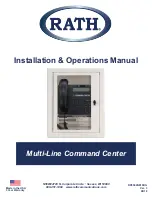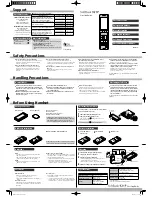
Health and Safety Information
170
Turning Off Your Phone Before Flying
Turn off your phone before boarding any aircraft. To prevent
possible interference with aircraft systems, the U.S. Federal
Aviation Administration (FAA) regulations require you to have
permission from a crew member to use your phone while the
plane is on the ground. To prevent any risk of interference,
FCC regulations prohibit using your phone while the plane is
in the air.
Turning Off Your Phone in Dangerous Areas
To avoid interfering with blasting operations, turn off your
phone when in a blasting area or in other areas with signs
indicating that two-way radios should be turned off.
Construction crews often use remote-control RF devices to set
off explosives.
Note: Never transport or store flammable gas, liquid or explosives in
the compartment of your vehicle that contains your phone or
accessories.
Turn off your phone when you’re in any area that has a
potentially explosive atmosphere. Although it’s rare, your
phone or its accessories could generate sparks. Sparks could
cause an explosion or a fire resulting in bodily injury or even
death. These areas are often, but not always, clearly marked.
They include:
●
Fueling areas such as gas stations.
●
Below deck on boats.
●
Fuel or chemical transfer or storage facilities.
●
Areas where the air contains chemicals or particles such as
grain, dust or metal powders.
●
Any other area where you would normally be advised to
turn off your vehicle’s engine.
Health and Safety Information
171
Restricting Children’s Access to your Phone
Your phone is not a toy. Children should not be allowed to play
with it because they could hurt themselves and others,
damage the phone or make calls that increase your phone
bill.
Caring for the Battery
The guidelines listed below help you get the most out of your
battery’s performance.
●
Use only Samsung-approved batteries and desktop
chargers. These chargers are designed to maximize
battery life. Using other batteries or chargers voids your
warranty and may cause damage.
●
In order to avoid damage, charge the battery only in
temperatures that range from 32º F to 104º F
(0º C to 40º C).
●
Don’t use the battery charger in direct sunlight or in high
humidity areas, such as the bathroom.
●
Never dispose of the battery by incineration.
●
Keep the metal contacts on top of the battery clean.
●
Don’t attempt to disassemble or short-circuit the battery.
●
The battery may need recharging if it has not been used
for a long period of time.
●
It’s best to replace the battery when it no longer provides
acceptable performance. It can be recharged hundreds of
times before it needs replacing.
Don’t store the battery in high temperature areas for long
periods of time. It’s best to follow these storage rules:
Less than one month
32º F to 104º F (0º C to 40º C)
Summary of Contents for SGH-P716
Page 6: ...Table of Contents 6 ...















































